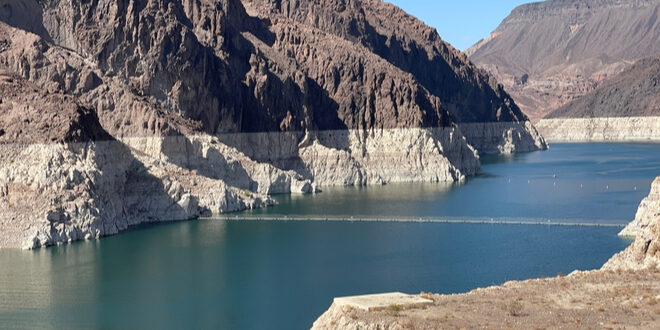Prolonged drought and low runoff conditions accelerated by climate change have led to historically low water levels in Lakes Powell and Mead, forcing the Bureau of Reclamation to declare a “Tier 2” shortage and is requiring water cuts in Arizona by 21 percent, Nevada by 8 percent and Mexico by 7 percent.
The declaration and cuts come on the heels of the Colorado River Basin August 2022 24-Month Study, which sets the annual operations for Lake Powell and Lake Mead.
“Every sector in every state has a responsibility to ensure that water is used with maximum efficiency. In order to avoid a catastrophic collapse of the Colorado River System and a future of uncertainty and conflict, water use in the Basin must be reduced,” said Assistant Secretary for Water and Science Tanya Trujillo.
Bureau of Reclamation Commissioner Camille Calimlim Touton agreed, stating, “Reclamation remains fully committed to working in a consensus manner across the Upper and Lower Basins, with Tribes, and with the country of Mexico. I am confident that, by working together, we can achieve meaningful change toward a sustainable future for the river that serves as the lifeblood of the American West.”
The key determinations from the August 2022 24-Month Study include:
- Lake Powell will operate in the Lower Elevation Balancing Tier in water year 2023 (Oct. 1, 2022, through Sept. 30, 2023). The 24-Month Study projects Lake Powell’s Jan. 1, 2023, water surface elevation to be 3,521.84 feet – 178 feet below full pool (3,700 feet) and 32 feet above minimum power pool (3,490 feet). The August 24-Month Study projects that Lake Powell will likely release 7 million acre-feet in water year 2023 with the potential for Powell releases to range between 7 to 9.5 maf during water year 2023, depending on hydrologic conditions, as Lake Powell and Lake Mead balance storage contents under the Lower Elevation Balancing Tier.
- The Department will evaluate hydrologic conditions in April 2023 and will implement the Interim Guidelines Section 7.D by limiting water year 2023 releases (with a minimum of 7.0 maf) to protect Lake Powell from declining below 3,525 feet at the end of December 2023.
- Lake Mead will operate in its first-ever Level 2a Shortage Condition in calendar year 2023 (Jan. 1, 2023, through Dec. 31, 2023). The August 24-Month Study projects Lake Mead’s Jan. 1, 2023, operating determination elevation to be 1,047.61 feet, which is calculated by taking Lake Mead’s projected end of calendar year 2022 physical elevation (1,040.78 feet) and adding the 480,000 acre-feet of water held back in Lake Powell to Lake Mead’s capacity to maintain operational neutrality. The projected elevation of 1,047.61 feet reflects a Level 2a Shortage Condition, within the DCP elevation band of 1,045 and 1,050 feet, with required shortage reductions and water savings contribution for the Lower Basin States and Mexico, pursuant to Minute 323, as follows:
- Arizona: 592,000 acre-feet, which is approximately 21% of the state’s annual apportionment
- Nevada: 25,000 acre-feet, which is 8% of the state’s annual apportionment
- Mexico: 104,000 acre-feet, which is approximately 7% of the country’s annual allotment
- There is no required water savings contribution for California in 2023 under this operating condition.
- Arizona: 592,000 acre-feet, which is approximately 21% of the state’s annual apportionment
 California Water News Daily Your Source For Water News in California
California Water News Daily Your Source For Water News in California


